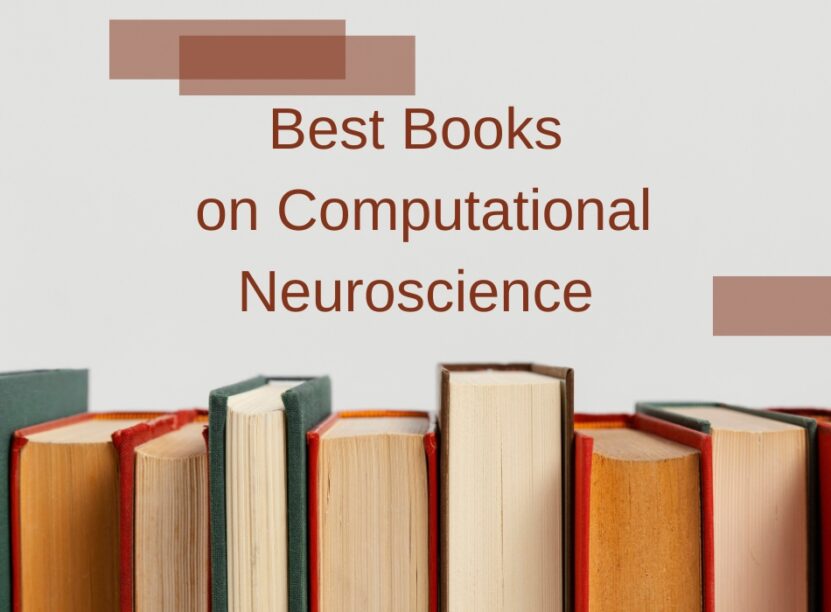Computational neuroscience is a multidisciplinary field that combines aspects of biology, physics, mathematics, and computer science to better understand the workings of the brain. It seeks to develop models that simulate how neural circuits work, to gain insights into neural function and behavior.
The field has advanced rapidly in recent years, thanks in part to the explosion of data and advances in computer hardware and software. Here are the 6 best books on computational neuroscience, each offering a unique perspective on the field.
List of Books
1. “Theoretical Neuroscience”
Author: Peter Dayan and L.F. Abbott
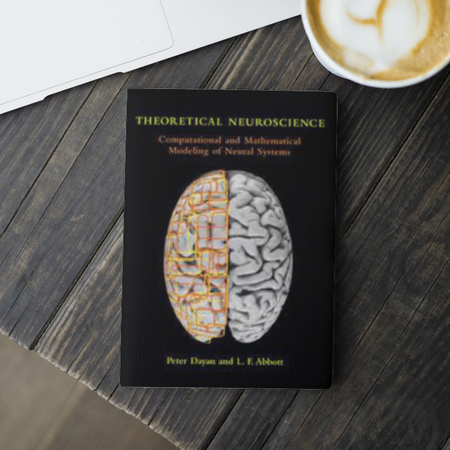
Theoretical neuroscience is a crucial field that aims to provide a quantitative basis for understanding how the nervous system operates. At the heart of this field is the use of mathematical and computational methods to describe what nervous systems do, how they function, and the general principles by which they operate.
This book by Peter Dayan and L.F. Abbott is an excellent textbook that introduces the basic mathematical and computational methods of theoretical neuroscience and their applications in various areas, such as vision, sensory-motor integration, development, learning, and memory.
The book is divided into three parts that build on each other to provide a comprehensive overview of the field. Part I focuses on the relationship between sensory stimuli and neural responses, with an emphasis on the representation of information by the spiking activity of neurons.
Part II discusses the modeling of neurons and neural circuits based on cellular and synaptic biophysics, allowing readers to gain insight into how neural circuits function. Part III analyzes the role of plasticity in development and learning, highlighting the mechanisms by which the brain adapts to changing environments.
An appendix covers the mathematical methods used in the book, and exercises are available on the book’s website, making it an excellent resource for students and researchers in the field.
2. “Spikes: Exploring the Neural Code”
Authors: Fred Rieke, David Warland, Rob de Ruyter van Steveninck, and William Bialek
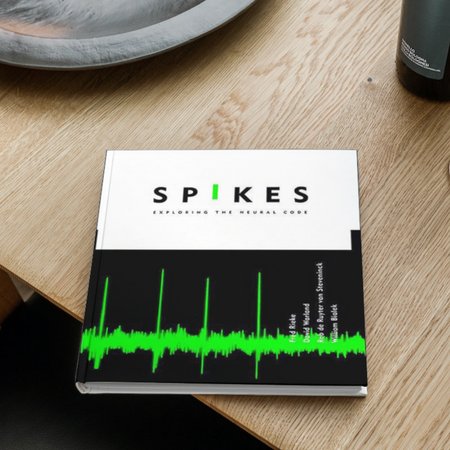
Our perception of the world is heavily influenced by the input from sensory nerves, which arrives as sequences of identical spikes. However, understanding how these spikes are processed by the brain to create our perception of the world is a complex problem that requires a deep understanding of the underlying neural computation.
“Spikes: Exploring the Neural Code,” by Fred Rieke, David Warland, Rob de Ruyter van Steveninck, and William Bialek is an excellent resource that provides a self-contained review of relevant concepts in information theory and statistical decision theory. It invites readers to play the role of a hypothetical observer inside the brain who makes decisions based on incoming spike trains rather than just analyzing how a neuron responds to a given stimulus.
The book begins by providing precise formulations of questions about the representation of sensory signals in neural spike trains. It then pursues the answers to these questions in experiments on sensory neurons.
The authors use a quantitative framework to pose precise questions about the structure of the neural code and show how these questions can influence the design and analysis of experiments on sensory neurons.
Intended for neurobiologists with an interest in mathematical analysis of neural data as well as physicists and mathematicians interested in information processing by “real” nervous systems, “Spikes” is an invaluable resource for those looking to gain a deeper understanding of the neural code and the processing of sensory information.
3. “Principles of Neural Design”
Authors: Peter Sterling and Simon Laughlin

Neuroscience research has advanced significantly over the last century, resulting in a massive accumulation of facts and mechanisms related to the functioning of the brain. However, the lack of a principled framework to organize this knowledge has been a significant gap in the field.
In “Principles of Neural Design,” distinguished neuroscientists Peter Sterling and Simon Laughlin aim to fill this gap by distilling general principles from over a century of scientific study and “reverse engineering” the brain to understand its design.
Sterling and Laughlin begin by considering why an animal would need a brain and trace computational abilities from bacteria to worms. They explore the advantages of “anticipatory regulation” and identify constraints on neural design while demonstrating the need to “nanofy” the brain.
They also discuss the routes to efficiency in an integrated molecular system, phototransduction. The authors show that the principles of neural design at lower levels apply at larger scales, and they describe neural wiring efficiency while discussing learning as a principle of biological design that includes “save only what is needed.”
The authors avoid speculation about how the brain might work and instead aim to make sense of what is already known, gathering a coherent set of basic rules and exemplifying them across spatial and functional scales.
This book is an essential read for neuroscientists looking for a principled framework to organize their knowledge of the brain. The authors have distilled a set of general principles from over a century of scientific study and reverse-engineered the brain to understand its design.
By gathering a coherent set of basic rules and exemplifying them across spatial and functional scales, Sterling and Laughlin provide a unique contribution to the field that helps to fill a significant gap in the current understanding of the brain’s design.
4. “Dynamical Systems in Neuroscience: The Geometry of Excitability and Bursting”
Author: Eugene M. Izhikevich
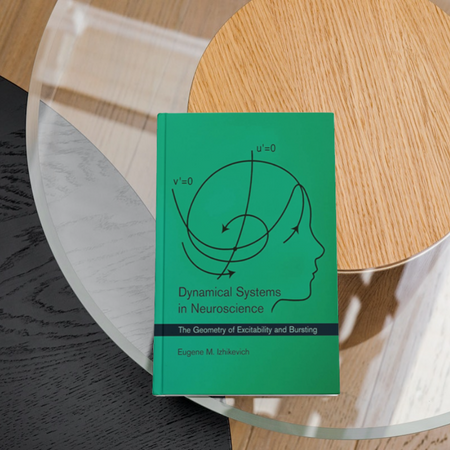
Nonlinear dynamics is a crucial tool used by neuroscientists to model neuronal behavior and interpret the results of modeling studies. In “Dynamical Systems in Neuroscience,” Eugene Izhikevich provides an introduction to nonlinear dynamical systems theory for researchers and graduate students in neuroscience.
The book also offers an overview of neuroscience for mathematicians who want to learn the basic facts of electrophysiology.
It presents a systematic study of the relationship between electrophysiology, nonlinear dynamics, and computational properties of neurons, emphasizing that information processing in the brain depends not only on the electrophysiological properties of neurons but also on their dynamical properties.
The book introduces dynamical systems, starting with one- and two-dimensional Hodgkin-Huxley-type models and continuing to a description of bursting systems. Each chapter proceeds from the simple to the complex, providing sample problems at the end.
The book explains all necessary mathematical concepts using geometrical intuition and includes many figures and a few equations, making it especially suitable for non-mathematicians.
Each concept is presented in terms of both neuroscience and mathematics, providing a link between the two disciplines. Overall, “Dynamical Systems in Neuroscience” offers neuroscience students and researchers a comprehensive account of concepts and methods increasingly used in computational neuroscience.
While nonlinear dynamical systems theory is at the core of computational neuroscience research, it is not a standard part of the graduate neuroscience curriculum. Moreover, it is not typically taught by math or physics departments in a way that is suitable for students of biology.
“Dynamical Systems in Neuroscience” addresses this gap by offering a comprehensive account of the concepts and methods used in computational neuroscience. The book is an excellent resource for neuroscientists who want to gain a deeper understanding of nonlinear dynamics and its application to the study of the brain.
It provides an intuitive introduction to the subject, allowing researchers and students to build a strong foundation in nonlinear dynamics theory and its applications to neuroscience.
5. “Neuronal Dynamics: From Single Neurons to Networks and Models of Cognition”
Author: Wulfram Gerstner, Werner M. Kistler, Richard Naud, and Liam Paninski
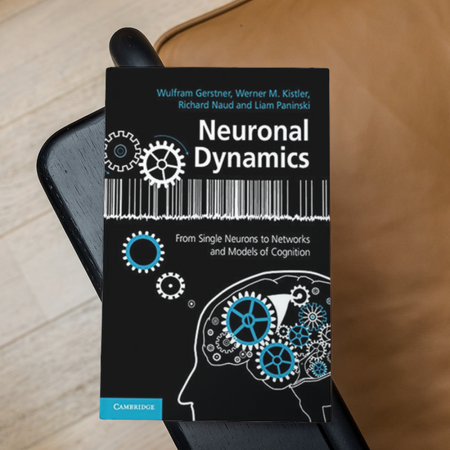
Neuroscience research has made significant strides in recent years, but there is still much to learn about the brain and how it functions. In “Computational Neuroscience: A First Course,” authors Eric L. Schwartz and Yael Niv provide an introduction to the field of computational neuroscience for advanced undergraduate and beginning graduate students.
The textbook covers classical topics, such as the Hodgkin–Huxley equations and Hopfield model, as well as modern developments in the field, such as generalized linear models and decision theory. Concepts are introduced using clear step-by-step explanations suitable for readers with only a basic knowledge of differential equations and probabilities and are richly illustrated by figures and worked-out examples.
The book’s comprehensive coverage of the subject matter, clear explanations, and numerous illustrations make it an ideal resource for students and researchers looking to gain a deeper understanding of the computational aspects of neuroscience.
End-of-chapter summaries and classroom-tested exercises further enhance the learning experience, making the book ideal for use in courses or for self-study. The authors also provide pointers to the literature and an extensive bibliography, which will prove invaluable to readers interested in further study.
6. “Neuroscience: Exploring the Brain”
Authors: Mark F. Bear, Barry W. Connors, and Michael A. Paradiso
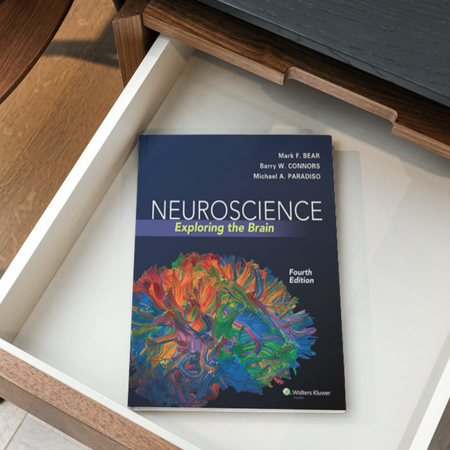
“Neuroscience: Exploring the Brain,” authored by Mark F. Bear, Barry W. Connors, and Michael A. Paradiso, is a comprehensive textbook that provides a broad introduction to neuroscience, covering a wide range of topics, including cellular and molecular neuroscience, systems neuroscience, and cognitive neuroscience.
The book is a valuable resource for students and researchers interested in neuroscience, as it provides a detailed overview of the subject matter, including the latest research findings. The authors explain these concepts using a mix of intuitive explanations and detailed illustrations, making it an excellent resource for beginners.
“Neuroscience: Exploring the Brain” also includes chapters on computational neuroscience and neural engineering, which are becoming increasingly important fields in neuroscience research. Computational neuroscience involves the use of mathematical and computational methods to understand the functioning of the brain, while neural engineering involves the use of engineering principles to design and develop neural prostheses and other devices that can interact with the nervous system.
The inclusion of these chapters makes this book an excellent resource for students and researchers interested in these rapidly growing fields. Overall, it is a comprehensive and valuable resource for anyone interested in gaining a deeper understanding of the workings of the brain.
Read our article about Best Internal Medicine Textbox also.
How to Choose the Best Book on Computational Neuroscience

As the field continues to grow, the number of books on computational neuroscience has also increased, making it challenging for students and researchers to choose the best book. In this section, we will provide some tips on how to choose the best book on computational neuroscience.
Consider your level of knowledge and expertise
One of the first things to consider when choosing a book on computational neuroscience is your level of knowledge and expertise in the field. If you are new to the field, it is best to choose a book that provides an introduction to the basic concepts and techniques in computational neuroscience. On the other hand, if you are an experienced researcher, you may want to choose a book that covers advanced topics in the field.
Look for books that cover the topics you are interested in
Another factor to consider when choosing a book on computational neuroscience is the topics covered in the book. Computational neuroscience is a broad field that covers a wide range of topics, including neural coding, learning and memory, and computational models of neural circuits. If you are interested in a specific topic, such as the neural basis of decision-making, you may want to choose a book that covers that topic in detail.
Check the author’s credentials
Another important factor to consider when choosing a book on computational neuroscience is the author’s credentials. Look for books written by authors who are experts in the field and have published papers in top-tier journals. You can also check the author’s academic credentials, such as their educational background and research experience, to ensure that they are qualified to write about the topic.

Check the book’s reviews and ratings
Before buying a book on computational neuroscience, it is a good idea to check the book’s reviews and ratings. Reviews can provide insight into the book’s strengths and weaknesses, and ratings can give you an idea of how well the book is regarded by other readers. You can check reviews on online bookstores such as Amazon, as well as on academic websites and forums.
Consider the book’s format and style
Finally, when choosing a book on computational neuroscience, consider the book’s format and style. Some books are written in a more technical and mathematical style, while others use a more accessible and intuitive approach.
Consider your preferred learning style and choose a book that matches your preferences. You may also want to consider the book’s format, such as whether it is a textbook or a monograph and whether it includes exercises or examples to reinforce learning.
Final Words
Computational neuroscience is a rapidly evolving field that seeks to understand the workings of the brain using a range of mathematical, computational, and experimental techniques.
The books listed here provide a detailed introduction to the theoretical foundations and practical applications of this field, covering topics such as neural coding, synaptic plasticity, and dynamical systems theory.
Whether you are a student or a researcher in this field, these titles are essential reading for anyone interested in the study of neural systems.

